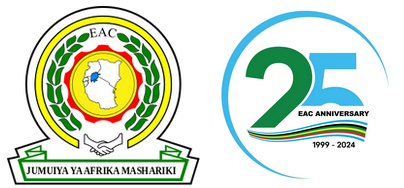Projects and Programmes
1. Liberalisation of Civil Aviation activities for regional carriers
In 2006, EAC Partner States initiated the implementation of Yamoussoukro Decision on the liberalisation of air transport in the region, and established an Air Transport sub-Committee, which is mandated with its implementation. Preparation of the framework is ongoing.
2. Establishment and Operationalisation of the EAC Unified Flight Information Region (UFIR)
The objective of the project is to create a single block of upper airspace over Tanzania, Kenya, Uganda, Burundi and Rwanda, operating from a single area control centre.
Following the completion of the UFIR study and approval of the study report, EAC decided to undertake a follow-on study before the implementation of the project starts to address the following:
- Expansion of the study to cover Burundi and Rwanda;
- Sustainability of the lower airspace;
- Safety analysis of the project; and
- Implementation of the project.
3. Implementation of the Search and Rescue Agreement
The project is aimed at operationalising the East African Search and Rescue Agreement, and developing a framework for its implementation.
4. Implementation of the Recommendations of the Global Navigation Satellite System (GNSS) Pilot Study
The goal of the project is to develop GNSS procedures for identified three airports in each Partner State in order to bring the existing airports in the region in line with international International Civil Aviation Organisation Standards and Recommended Practices. The project is being coordinated by the EAC Secretariat and implemented by the Partner States through their national budgets.
5. Regional Airport Projects
The project aims at primarily improving the airport facilities and services to enhance safety and security standards but also to promote commercial activities which are important for the sustainability of the facility in the long term.
There is an increasing demand for the interconnectivity of tourism destinations in the region. Foreign and local tourists will have better value for money where the various attractions and tourist potentials that can be reached in one circuit, for example Serengeti-Mara-Pakuba-Kigoma and the Coastal sites of Mafia, Zanzibar, Pemba, Mombasa, Malindi and Lamu circuits.
6. East African Aviation Training Organisations Rehabilitation Project
The goal of this project for the rehabilitation of the aviation schools in the region is to ensure a sustainable provision of timely, relevant and targeted training for the Air Transport Sector in East Africa to support enhanced aviation safety and security in the region so as to promote trade, the tourism industry and the regional economy as a whole.
